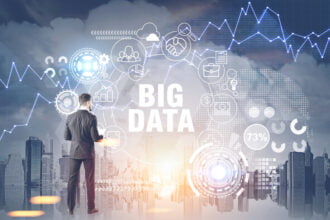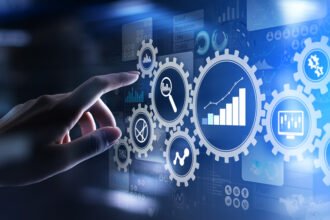A growing number of organizations are resorting to the use of big data. They have found that big data technology offers a number of benefits. Companies that leverage it effectively increase their profitability by 60%.
However, utilizing big data is more difficult than it might seem. Companies must be aware of the different ways that data can be collected, aggregated and applied. They must stay on top of the latest developments in technology if they want to make the most of big data for their business.
One of the most novel ways companies are using big data technology is by applying Lidar data. Keep reading to learn more.
Lidar Data is Valuable for Data-Driven Businesses
Lidar is a popular acronym used for Light Detection and Ranging. To get the range data from this technology, you will start by projecting a laser beam at a surface or an object. Then, measure the time it takes for the reflected beam of light to reach the receiver. This technology adopts the same principle as radar but uses a laser.
Due to the high accuracy that Lidar data are known for, many people adopt them for various applications. Such applications include mining, transportation expansion, land survey, forestry, and farming. They can incorporate it into their IT practices to make the most of their data strategy.
But you might not get this data correctly by doing it yourself. So, we advise that you hire a reputable company such as VeriDaaS for High Definition Lidar Data. The professionals have all the knowledge and experience to provide the advantages of this technology outlined below.
Pros of High-Resolution Lidar Data for Data-Driven Companies
Here are some of the reasons data-driven organizations are taking advantage of Lidar data.
High positional advantage yields high accuracy
Lidar uses airborne sensing technology to generate its high-resolution lidar data. Such a setup makes data generation extremely fast. Moreover, it also has a high positional advantage, making it highly accurate compared to low-resolution lidar data.
It has a high vertical accuracy of about 5-15 cm and horizontal accuracy of 30-50 cm. Also, Lidar uses a short wavelength capable of detecting small bodies and can generate 3D models with high accuracy. Engineers can easily tell if the body is a person, a wall, or a tree.
Lidar technology generates results at a high speed
With the high-resolution Lidar technology, you don’t have to worry about surveying large areas and the amount of time it will take to complete such projects. Lidar data is generated in the shortest possible time. This is because the sensor sends out the laser, which travels, hits the target, and returns to the receiver in a few nanoseconds.
One can generate Lidar data for a 1000 sq kilometer in 12 hours. Another property of this technology that contributes to its high speed is that its measurements are direct and do not need human interference interpretations.
Can be used in previously inaccessible locations
Before now, it was difficult or impossible to fetch data from certain locations due to certain features. These locations include tall mountains, snowy areas, and thick forests with heavy canopies. With Lidar technology, these areas can now be easily mapped.
Furthermore, this feature gives Lidar an additional advantage over traditional photogrammetry as its pulses can reach beneath canopies and generate point measurements for elevation data. Consequently, no matter how dense, data from any forest is accessible through Lidar.
Works perfectly under low-light conditions
Another attribute that makes Lidar data more preferred is its zero dependence on factors such as low ambient light. As such, you can generate data regardless of whether it is day or night. This is because it operates using a highly sensitive illumination sensor.
Furthermore, its independence on light variations accounts for higher efficiency. Thus, there’s higher credibility and level of consistency with high-resolution Lidar data.
Ideal data collection technique for floodplain delineation
Lidar generates surface data with high sample density. Furthermore, the surface density of such data is superior to that of traditional photogrammetry techniques and equipment. Such superior efficiency makes Lidar a better data collection technology for complex mapping applications, including floodplain delineation.
Data generation requires minimal human intervention
Over the years, Lidar has built advanced hardware with a higher level of automation. With increased automation, the need for human interference during data collection has been reduced to a minimum. As such, errors due to human miscalculations or flawed judgment is at their lowest.
This further makes Lidar data more reliable. Furthermore, the minimal need for humans in operation has reduced the extensive cost of generating lidar data to a bare minimum.
Extreme weather conditions don’t affect data generation
Lidar works in the hottest or coldest of weather conditions. This means that you can collect the needed data and proceed with the analysis of the data regardless of the weather condition. Furthermore, such conditions do not affect data generated or analyzed.
Lidar Data is Invaluable for Businesses Trying to Come Up with Sound Data Strategies
The most notable features of Lidar that also doubles as advantages are high accuracy and the high speed at which they are generated. Also, lidar data can be generated amidst various environmental conditions such as low light and extreme weather.
Considering the many advantages that far outweigh the disadvantages, Lidar is a worthwhile investment if you want to generate high-accuracy mapping data. Thankfully, the high cost of the technology will soon be a thing of the past as newer additions are coming into the picture.











